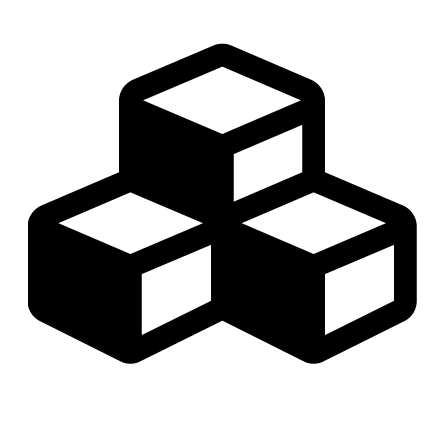Search Constraints
1 - 7 of 7
Number of results to display per page
View results as:
Search Results
-
- Creator:
- Nunley, Hayden, Xue, Xufeng, Sun, Yubing, Resto-Irizarry, Agnes M, Yuan, Ye, Yong, Koh Meng Aw, Zheng, Yi, Weng, Shinuo, Shao, Yue, Lubensky, David K, Studer, Lorenz, and Fu, Jianping
- Description:
- Studies of fate patterning during development typically emphasize cell-cell communication via diffusible chemical signals. Recent experiments on stem cell colonies (see Xue et al. Nature Materials 2018), however, suggest that in some cases mechanical stresses, rather than secreted chemicals, enable long-ranged cell-cell interactions that specify positional information and pattern cell fates. The authors of this earlier publication reported a set of in vitro experiments in which uniformly supplied chemical media induced spatially patterned fates in cell colony in a disc geometry. They provided significant evidence that inter-cellular mechanical interactions, as well as mechanical interactions between cells and the substrate, play an important role in this in vitro differentiation process. As part of these experiments, they showed that the concentric width of the outer fate domain is approximately constant as the colony diameter is increased from 300 um to 800 um. In this subsequent publication, we propose a mathematical model for this fate patterning process and explore how the fate pattern depends on substrate stiffness. The experimental images of cell colonies, both for varying cell colony diameter (from Xue et al. Nature Materials 2018) and for varying substrate stiffness (data generated for the publication linked to these data), are provided here. Each example has an image for PAX3 signal (marker for outer fate domain; Paired box gene 3) and an image for DAPI signal (staining nuclei; 4′,6-diamidino-2-phenylindole).
- Keyword:
- Biomechanics, Cell communication, Cell mechanics, Developmental pattern formation, Force sensing, and Vertebrate development
- Citation to related publication:
- Nunley H, Xue X, Fu, J, Lubensky, DK. Generation of fate patterns via intercellular forces. BioRxiv 442205 [Preprint]. April 30, 2021 [cited 2025 Feb 20]. Available from: doi: https://doi.org/10.1101/2021.04.30.442205 and Xue X, Sun Y, Resto-Irizarry A.M. et al. Mechanics-guided embryonic patterning of neuroectoderm tissue from human pluripotent stem cells. Nature Mater 17, 633–641 (2018). https://doi.org/10.1038/s41563-018-0082-9
- Discipline:
- Science and Engineering
-
- Creator:
- Nunley, Hayden and Lubensky, David K
- Description:
- In a previous study (Xue et al. Nature Materials 2018), the authors showed that a key fate patterning event in vertebrate development can be reproduced in an in vitro stem cell culture. They further showed that this in vitro fate pattern seems to depend on mechanical signals rather than secreted chemical signals. In this follow-up study, a mathematical model of this process is proposed. The code in this deposit is for the simulation of this mathematical model in various cell layer geometries and substrate geometries. These geometries include a 1D cell layer, quasi-1D stripe geometry, disc geometry (all on a very thin substrate or a substrate composed of microposts) as well as a 1D cell layer on a finite-thickness substrate. Our model implies that the width of the outer fate domain varies non-monotonically with substrate stiffness, a prediction that we confirm experimentally.
- Keyword:
- Biomechanics, Cell communication, Cell mechanics, Developmental pattern formation, and Force sensing
- Citation to related publication:
- Nunley H, Xue X, Fu, J, Lubensky, DK. Generation of fate patterns via intercellular forces. BioRxiv 442205 [Preprint]. April 30, 2021 [cited 2025 Feb 20]. Available from: doi: https://doi.org/10.1101/2021.04.30.442205, Xue X, Sun Y, Resto-Irizarry A.M. et al. Mechanics-guided embryonic patterning of neuroectoderm tissue from human pluripotent stem cells. Nature Mater 17, 633–641 (2018). https://doi.org/10.1038/s41563-018-0082-9, Banerjee S, Marchetti MC. Substrate rigidity deforms and polarizes active gels. EPL (Europhysics Letters) 96, 28003 (2011). https://doi.org/10.1209/0295-5075/96/28003, Edwards CM, Schwarz US. Force Localization in Contracting Cell Layers, Physical Review Letters 107, 128101 (2011). https://doi.org/10.1103/PhysRevLett.107.128101, and Banerjee S, Marchetti MC. Contractile Stresses in Cohesive Cell Layers on Finite-Thickness Substrates, Physical Review Letters 109, 108101 (2012). https://doi.org/10.1103/PhysRevLett.109.108101
- Discipline:
- Engineering and Science
-
- Creator:
- Nunley, Hayden, Xue, Xufeng, Sun, Yubing, Resto-Irizarry, Agnes M, Yuan, Ye, Yong, Koh Meng Aw, Zheng, Yi, Weng, Shinuo, Shao, Yue, Lubensky, David K, Studer, Lorenz, and Fu, Jianping
- Description:
- In an earlier study (Xue et al. Nature Materials 2018), stem cells differentiated into one of two cell types, neural plate border (NPB) or neural plate (NP), in vitro. This previous study demonstrated that this differentiation is likely mechanics-guided. Part of this demonstration was measurements of the displacement of microposts under the cell layer as the cells differentiate. These measurements suggested that the NPB cells are more contractile than NP cells. In a follow-up study (linked to this dataset), we quantitatively analyzed these data to demonstrate even further that the NPB cells are mechanically different than the NP cells and that the post displacement profile is not explained by a model of a cell layer with uniform mechanical properties. This analysis motivated the mathematical model -- for this cell colony system -- that we proposed and analyzed.
- Keyword:
- Biomechanics, Cell communication, Cell mechanics, Developmental pattern formation, Force sensing, and Vertebrate development
- Citation to related publication:
- Hayden Nunley, Xufeng Xue, Jianping Fu, David K. Lubensky bioRxiv 2021.04.30.442205; doi: https://doi.org/10.1101/2021.04.30.442205 and Xue X, Sun Y, Resto-Irizarry A.M. et al. Mechanics-guided embryonic patterning of neuroectoderm tissue from human pluripotent stem cells. Nature Mater 17, 633–641 (2018). https://doi.org/10.1038/s41563-018-0082-9
- Discipline:
- Engineering and Science
-
- Creator:
- Nunley, Hayden, Xue, Xufeng, Fu, Jianping, and Lubensky, David K
- Description:
- In an earlier publication (Xue et al. Nature Materials 2018), the authors reported a set of in vitro experiments in which uniformly supplied chemical media induced spatially patterned fates in cell colony in a disc geometry. They provided significant evidence that inter-cellular mechanical interactions, as well as mechanical interactions between cells and the substrate, play an important role in this in vitro differentiation process. In this subsequent publication, we propose a mathematical model for this fate patterning process and explore how the fate pattern depends on substrate stiffness. One ingredient of this mathematical model is that the cells at the very edge of the colony (lacking adherens junctions on one side) are geometrically different than the rest (by occupying a larger area on the micropattern). These images of DAPI (staining nuclei) and ECad (at adherens junctions) for colonies during early cell differentiation demonstrate this difference. Corresponding code for analysis is included.
- Keyword:
- Biomechanics, Cell mechanics, and Developmental pattern formation
- Citation to related publication:
- Nunley H, Xue X, Fu, J, Lubensky, DK. Generation of fate patterns via intercellular forces. BioRxiv 442205 [Preprint]. April 30, 2021 [cited 2025 Feb 20]. Available from: doi: https://doi.org/10.1101/2021.04.30.442205 and Xue X, Sun Y, Resto-Irizarry A.M. et al. Mechanics-guided embryonic patterning of neuroectoderm tissue from human pluripotent stem cells. Nature Mater 17, 633–641 (2018). https://doi.org/10.1038/s41563-018-0082-9
- Discipline:
- Engineering and Science
-
- Creator:
- Nunley, Hayden, Xue, Xufeng, Sun, Yubing, Resto-Irizarry, Agnes M, Yuan, Ye, Yong, Koh Meng Aw, Zheng, Yi, Weng, Shinuo, Shao, Yue, Studer, Lorenz, Fu, Jianping, and Lubensky, David K
- Description:
- In an earlier study (Xue et al. Nature Materials 2018), stem cells differentiated into one of two cell types, neural plate border (NPB) or neural plate (NP), in vitro with the NP forming a central circular domain. This previous study demonstrated that this differentiation is likely mechanics-guided. Part of this demonstration was measurements of the displacement of microposts under the cell layer as the cells differentiate. These measurements suggested that the NPB cells are more contractile than NP cells (see Dataset of cell layers on micro-patterned substrates compost of posts). The authors of the 2018 study and of a follow-up study further explored how the size of the NPB domain depends on experimental conditions (see Dataset of stem cell colonies differentiating in neural induction medium and code for analysis of resulting fate pattern). To further understand what factors could be driving NPB formation, we estimated cell area at the colony edge (see Dataset on cell areas and nuclear densities in differentiating stem cell colonies). This analysis inspired a mathematical model of mechanical patterning: fate affects cell contractility, and pressure in the cell layer biases fate. Cells at the colony edge, more contractile than cells at the center, seed a pattern that propagates via force transmission. We simulated the model in various cell geometries and for different substrates (see Code for simulating NP/NPB fate patterning in stem cell colonies). Strikingly, our model implies that the width of the outer fate domain varies non-monotonically with substrate stiffness, a prediction that we confirm experimentally. Our findings thus support the idea that mechanical stress can mediate patterning in the complete absence of chemical morphogens, even in non-motile cell layers, thus expanding the repertoire of possible roles for mechanical signals in development and morphogenesis.
- Keyword:
- Biomechanics, Cell communication, Cell mechanics, Developmental pattern formation, Force Sensing, and Vertebrate development
- Discipline:
- Science
4Works -
- Creator:
- Danforth, Shannon M.
- Description:
- This dataset includes three MATLAB data files for each subject: raw motion capture and force plate data, processed motion capture and force plate data, and sagittal-plane data segmented into individual trials labeled “nominal” or “tripped.” We include two example scripts for using the segmented trial data to tabulate trip recovery strategies across subjects and plot the sorted recovery strategies.
- Keyword:
- Trip recovery, Biomechanics, and Human locomotion
- Citation to related publication:
- S. M. Danforth, X. Liu, M. J. Ward, P.D. Holmes, and R. Vasudevan, "Predicting sagittal-plane swing hip kinematics in response to trips," IEEE Robotics and Automation Letters, 2022.
- Discipline:
- Engineering
-
- Creator:
- Payam Mirshams Shahshahani
- Description:
- The two R codes are related to the feasible balance region calculations for Figures 2, 3, and 4 in the paper. The MATLAB codes are related to the simulations of the recoverable initial quasi-static states, the results of which are shown in Figure 5 of the paper.
- Keyword:
- One-legged balance, Biomechanics, Hip Abductor, and Unipedal Stance
- Citation to related publication:
- Shahshahani, P. M., & Ashton-Miller, J. A. (2020). On the importance of the hip abductors during a clinical one legged balance test: A theoretical study. PLOS ONE, 15(11), e0242454. https://doi.org/10.1371/journal.pone.0242454
- Discipline:
- Health Sciences and Engineering

